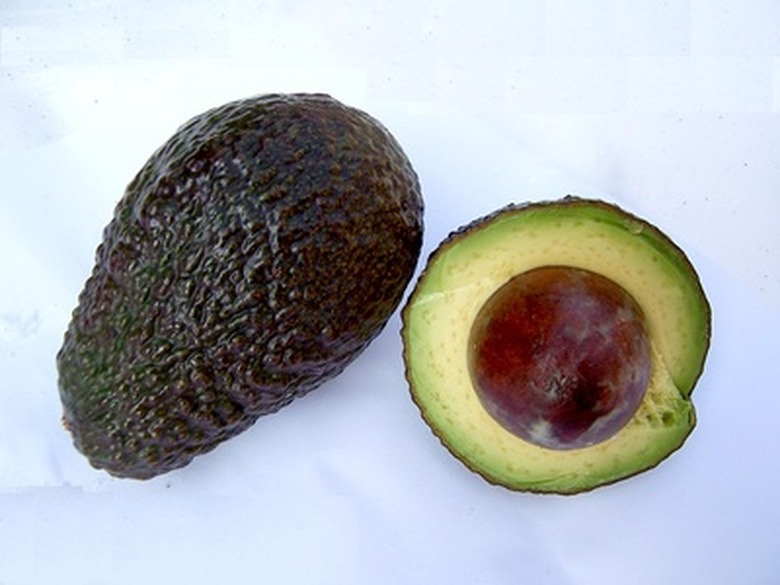How To Grow Avocado Trees In Texas
Things Needed
- Shovel
- Avocado tree sapling
- Water
- 21-0-0 fertilizer
A tropical fruit, avocados grow well in Texas, particularly in the colder regions. Avocados come in three main types: West Indian, Guatemalan and Mexican. West Indian are the least cold-hardy and have a more watery flavor. Mexican avocados are cold-hardy and have a nice flavor, but are more susceptible to disease. Guatemalan avocados fall in between the two types. Plant avocado trees in Texas in the spring or fall, using a container tree from a local nursery.
Step 1
Choose a site for your avocado tree that offers full sun and protection from wind, typically on the south or southeast side of your house. Texas A&M recommends planting no closer than 8 feet to the house since the tree can grow large.
- A tropical fruit, avocados grow well in Texas, particularly in the colder regions.
Step 2
Dig a hole that's twice the size of your avocado tree's root ball. Remove rocks and roots from the site.
Step 3
Pull your avocado tree from its container. Break apart the root ball by rubbing it between your hands. Untangle any roots that have become circled or tangled, since trees planted with tangled roots can choke once planted.
Step 4
Place the tree in the hole so it sits at the same depth as it was planted in the container. Once you've checked that the tree is vertically straight, cover over the hole with soil.
- Dig a hole that's twice the size of your avocado tree's root ball.
- Once you've checked that the tree is vertically straight, cover over the hole with soil.
Step 5
Water the newly planted avocado tree until the ground becomes saturated with water and the soil compresses around the tree's trunk.
Step 6
Fertilize the avocado tree once a month during the growing season (February to September) with a half-cup of 21-0-0 fertilizer. Scatter the fertilizer around the tree trunk, then water to work it into the soil. In the tree's second year of life, use 1 cup of 21-0-0 per month, then switch to 2 cups per month in year three. In year four and thereafter, apply fertilizer in February, May and September at the rate of 1 to 2 cups per inch of tree-trunk diameter, split into thirds. So a tree with a 4-inch trunk diameter would take 4 to 8 cups of fertilizer in a year, split into three equal applications.
Step 7
Water the tree once or twice a week for the first couple months, watering until the soil becomes saturated. For the first three years, water your avocado tree once a week if you receive no rain; discontinue supplemental watering in rainy periods.
- Water the newly planted avocado tree until the ground becomes saturated with water and the soil compresses around the tree's trunk.
- Fertilize the avocado tree once a month during the growing season (February to September) with a half-cup of 21-0-0 fertilizer.
Step 8
Protect your avocado tree during the winter by wrapping the branches and trunk with burlap. Remove this protection in the spring when frost danger passes.
Step 9
Harvest avocados once a few have fallen from the tree. Something in the fruit's genetic makeup prevents it from ripening on the tree, notes Purdue University.
Tip
According to Texas A&M, grafted avocado saplings bear fruit two years after planting. All avocado trees perform well in south Texas. Choose a cold-hardy Mexican avocado tree if you live in a colder area of Texas.
